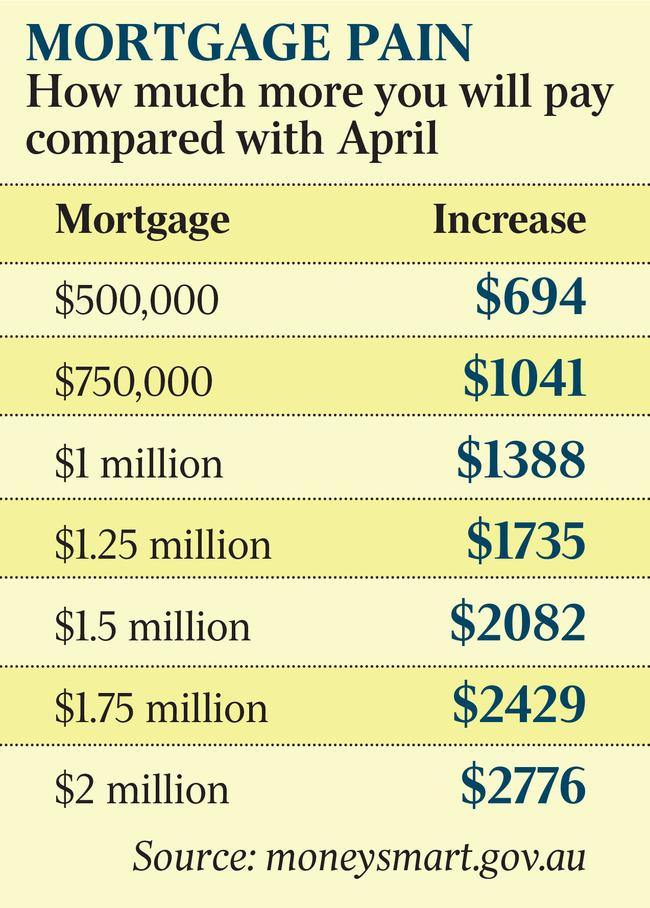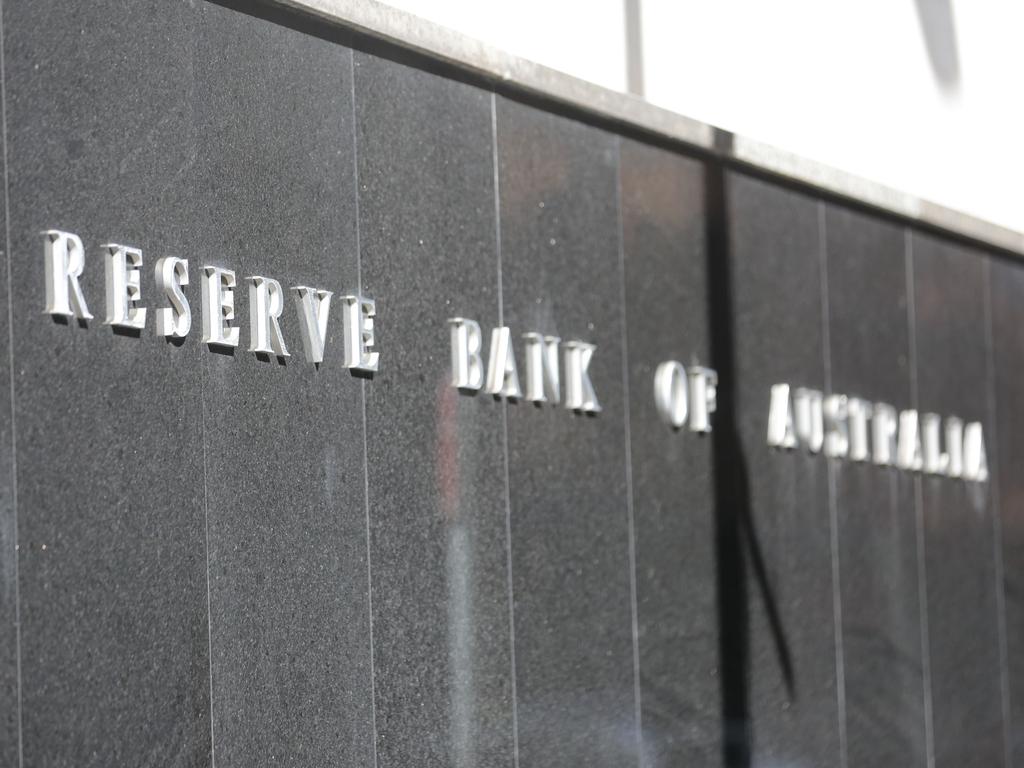RBA slows rate pace from breakneck to galloping
The Reserve Bank has slowed the breakneck pace of rate hikes, easing fears the central bank’s battle to tame runaway inflation would come at the cost of a recession.

The Reserve Bank has slowed the breakneck pace of rate hikes, delivering a smaller than expected 0.25-percentage-point increase to 2.6 per cent and easing fears the central bank’s battle to tame runaway inflation would come at the cost of a recession.
With consumer price growth at 30-year highs of 6.1 per cent and set to climb further, RBA governor Philip Lowe signalled there were further hikes to come but said the decision to end a run of four straight double-rate rises was in order to “assess the outlook for inflation and economic growth”.
The announcement offered some hope to embattled mortgage holders who since May have endured the most aggressive policy tightening in a generation.
In a statement accompanying the surprise decision – most economists had tipped a 0.5ppt increase – Dr Lowe said “the cash rate has been increased substantially in a short period of time”, even as he reiterated the board’s commitment “to returning inflation to the 2–3 per cent range over time”.

“Reflecting this, the board decided to increase the cash rate by 25 basis points this month as it assesses the outlook for inflation and economic growth in Australia,” he said.
The latest 0.25ppt rise would increase monthly repayments on a $750,000 mortgage by $110, once the move flows through to homeowners over the coming two to three months.
This would take repayments $1030 higher since the first rise in the current cycle in May, according to RateCity.
Westpac, NAB and ANZ immediately announced they would follow the central bank and slug variable-rate mortgage customers with another 0.25 percentage-point increase. The Commonwealth Bank followed late on Tuesday night.
Jim Chalmers said “just because this (rate rise) is a bit less than what many people were anticipating … won’t make it that much easier for Australians to find room in their household budgets to meet the increasing costs of servicing the mortgage”.
The RBA is the first major central bank to scale back the size of rate hikes, and Tuesday’s decision wrong-footed investors who had assumed the RBA would follow its global peers and keep up the fast pace of tightening.
The benchmark S&P/ASX 200 sharemarket index added to powerful earlier gains to end the day 3.8 per cent higher at 6699 points – its best day since mid-2020, while the Australian dollar tumbled below US65c following the decision.

CBA head of Australian economics Gareth Aird credited the Treasurer’s repeated message that he would deliver a “bread and butter” budget on October 25 in “helping the RBA feel more comfortable about going 25 (basis points)”.
“That’s in contrast to the UK government, which plans to stimulate the economy when the Bank of England is trying to fight inflation. Monetary policy and fiscal policy in Australia are working in tandem, and that’s fed into the decision to slow the pace of tightening,” Mr Aird said.
Dr Lowe signalled he was aware of the delayed impact of climbing borrowing costs on Australians, who are already suffering from falling real wages and surging prices for essentials such as food and fuel. “Higher inflation and higher interest rates are putting pressure on household budgets, with the full effects of higher interest rates yet to be felt in mortgage payments.
“Consumer confidence has also fallen and housing prices are declining after the earlier large increases,” he said.
“Working in the other direction, people are finding jobs, gaining more hours of work and receiving higher wages. Many households have also built up large financial buffers and the saving rate still remains higher than it was before the pandemic.”
Higher interest rates are yet to be fully reflected in economic data such as retail spending, which remained at record levels in August, and the economy grew strongly in the June quarter.
Analysts predict rising borrowing costs will weigh on activity over the final months of the year, and expect a marked slowdown in growth from about 4 per cent this year to 2 per cent in 2023.
KPMG chief economist Brendan Rynne said the RBA was “worried that the lagged effects of the previous interest rates increases are about to kick in”.
“Monetary policy has been described as like pulling a brick by a rubber band – for a long time nothing happens, but then the effect can be dramatic,” Dr Rynne said.
Business groups welcomed the slowing pace of rate rises.
Australian Chamber of Commerce and Industry chief executive Andrew McKellar said “the RBA has made the right decision to tread more carefully”.
“With the RBA embarking on its most aggressive tightening cycle for many years, it must be mindful not to go too hard, too fast,” Mr McKellar said.








To join the conversation, please log in. Don't have an account? Register
Join the conversation, you are commenting as Logout